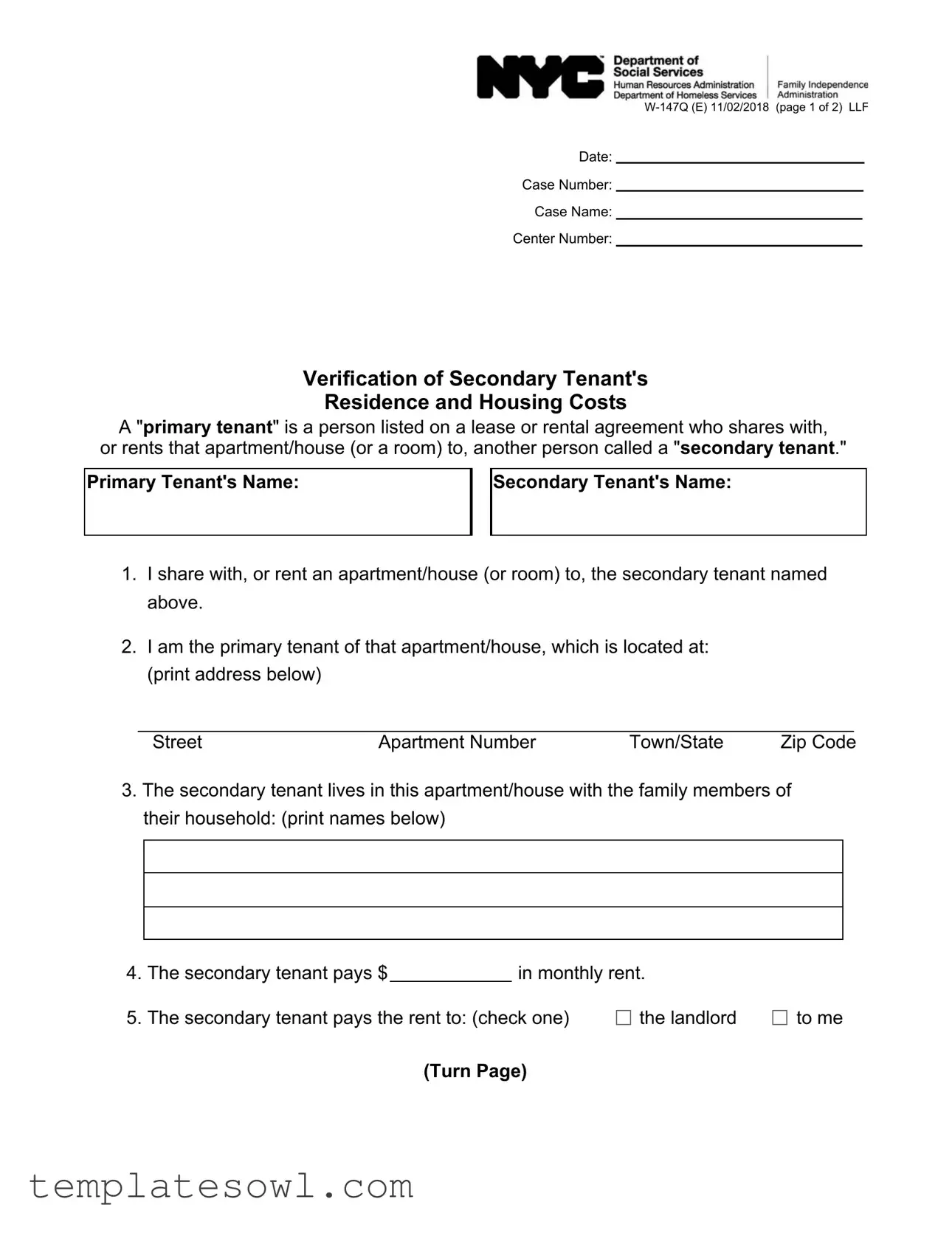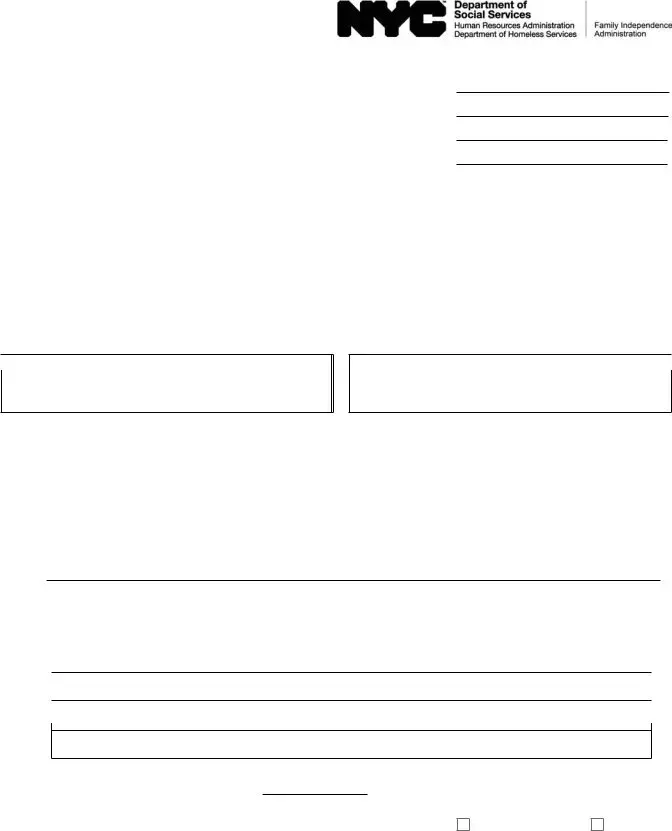What is the purpose of the W 147Q form?
The W 147Q form serves as a verification tool for the residency and housing costs of secondary tenants living with a primary tenant. It is used to confirm the living arrangement between the primary tenant and the secondary tenant, ensuring that the information provided aligns with housing assistance programs or benefits. This form facilitates transparency in housing situations, which is essential for managing rental agreements or benefits related to housing needs.
Who qualifies as a primary tenant and a secondary tenant?
A primary tenant is someone who is officially listed on a lease or rental agreement and holds legal responsibility for the property. This individual typically shares their living space with one or more secondary tenants. A secondary tenant, on the other hand, is someone who rents a room or an apartment from the primary tenant. This relationship can vary depending on the specific living arrangements and agreements made between the parties involved.
What information is required to complete the W 147Q form?
To accurately complete the W 147Q form, a primary tenant must provide specific details, including their name and the secondary tenant's name, the rental property address, the amount of monthly rent paid by the secondary tenant, and how the rent is paid (directly to the landlord or to the primary tenant). Additionally, the form requires information about the heating or air conditioning costs, and any other utility payments made by the secondary tenant, if applicable. A telephone number and a copy of the lease or relevant documents are also necessary for verification purposes.
How does the verification process work?
The verification process is initiated when the W 147Q form is submitted along with supporting documents. Human Resources Administration or Family Independence Administration will review the provided details to confirm the primary tenant's claims. It may involve contacting the listed landlord for additional verification. Ensuring correctness and completeness in the submitted information is crucial, as inaccuracies can affect housing assistance eligibility or other related benefits.
What should a tenant do if the information on the form changes?
If there are any changes in the information provided on the W 147Q form—such as changes in rent, housing arrangements, or tenant status—the primary tenant is responsible for submitting an updated form promptly. It is important to maintain accurate records to avoid complications or issues with housing assistance programs. Keeping open lines of communication with the secondary tenant and relevant housing authorities can help facilitate a smooth process for any necessary updates.






 in monthly rent.
in monthly rent.
